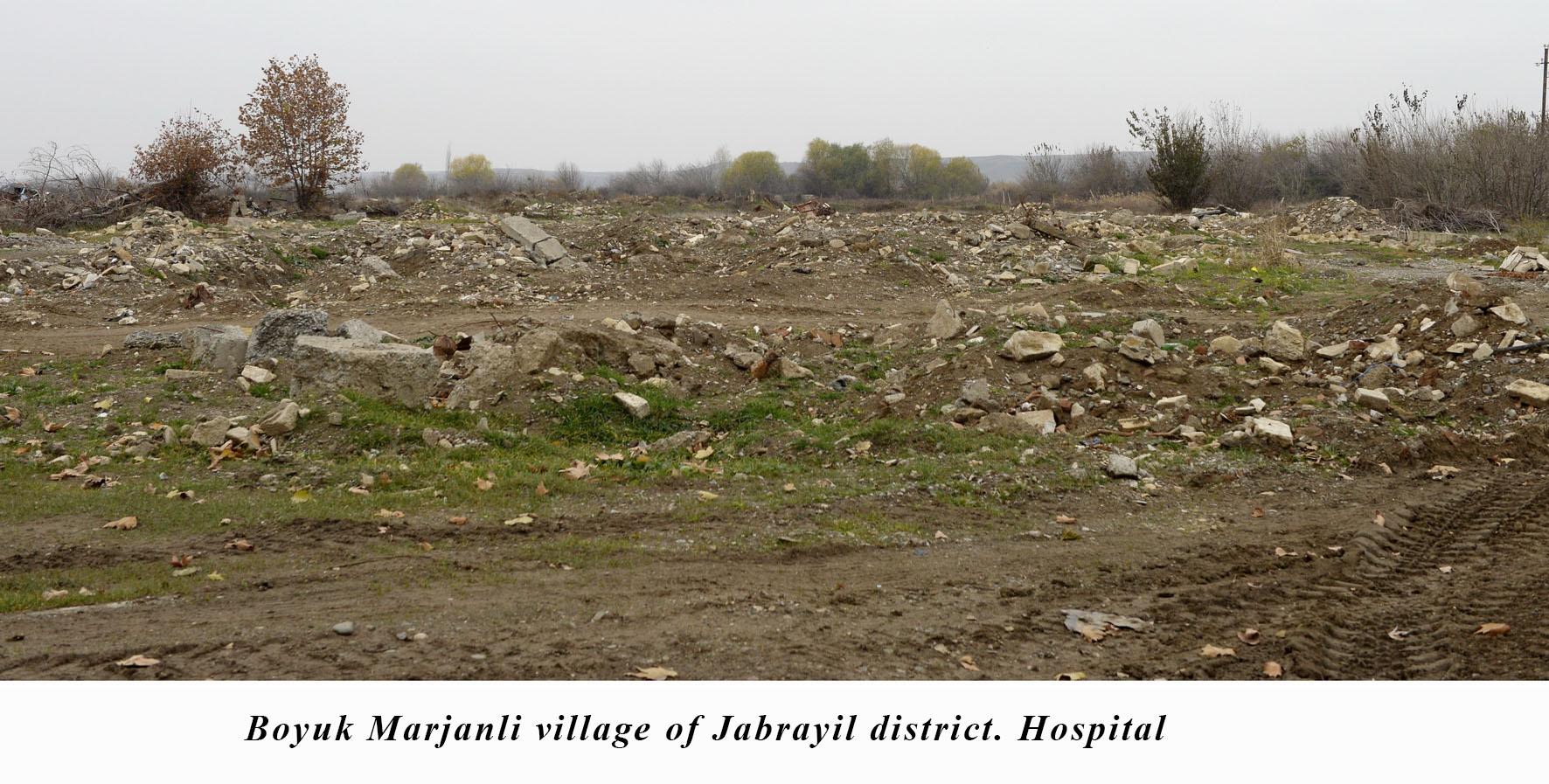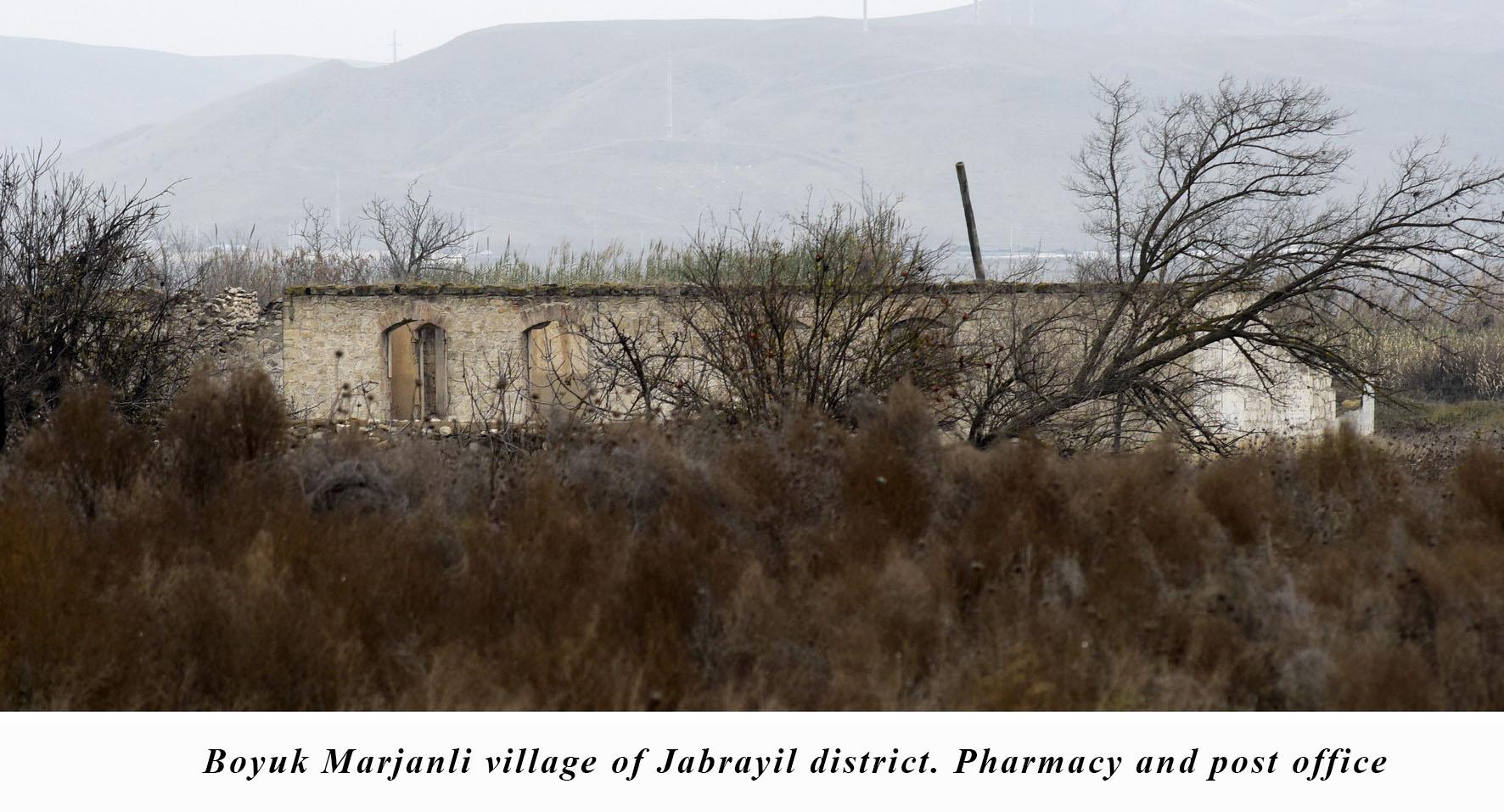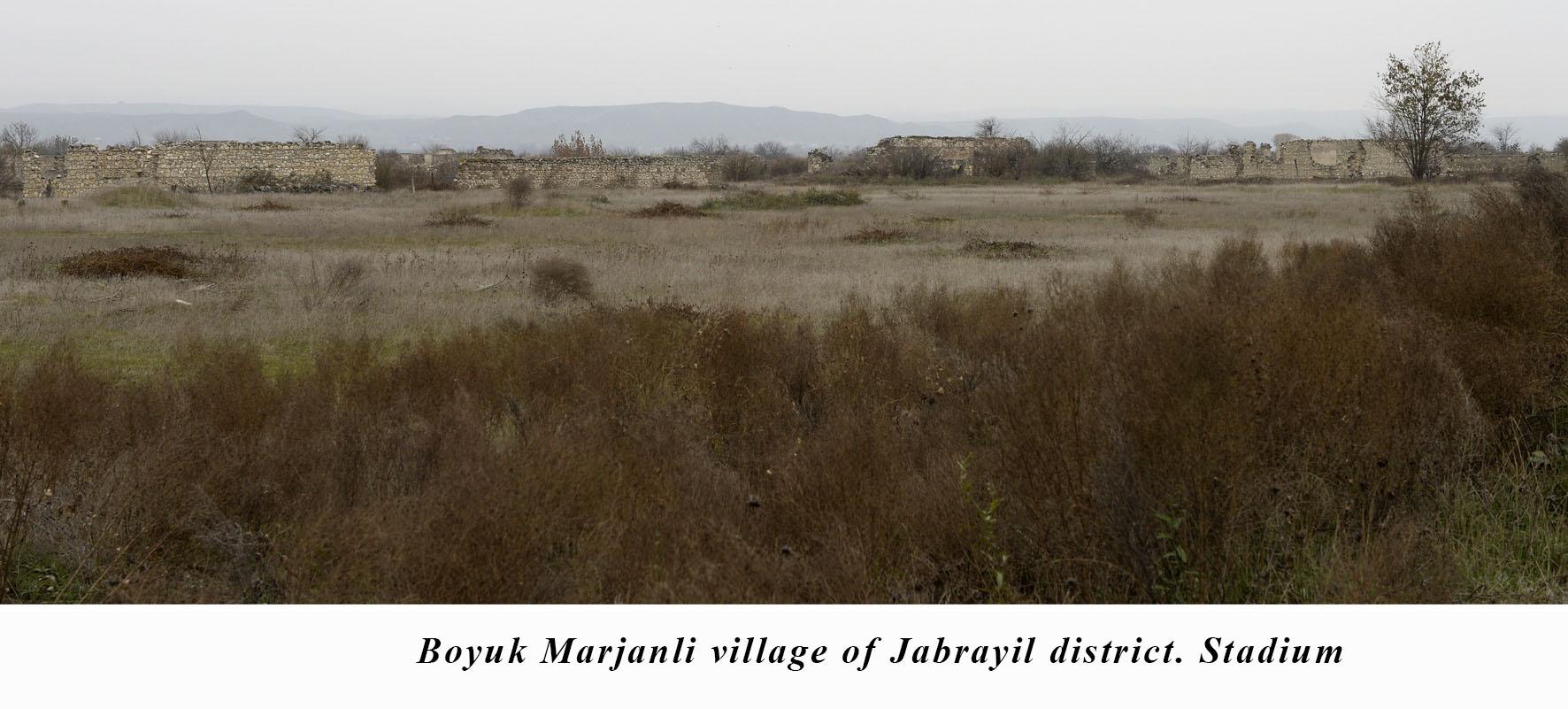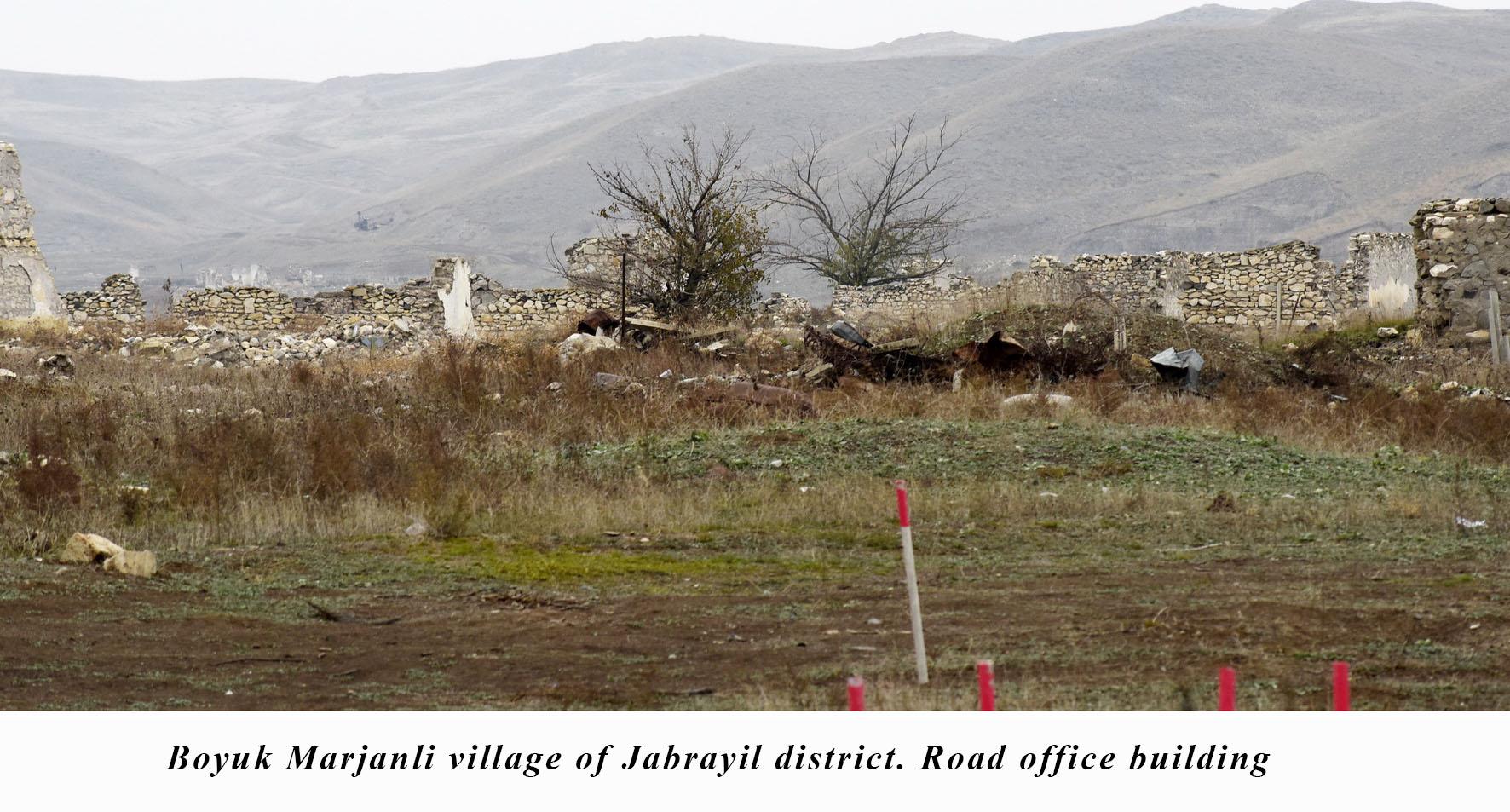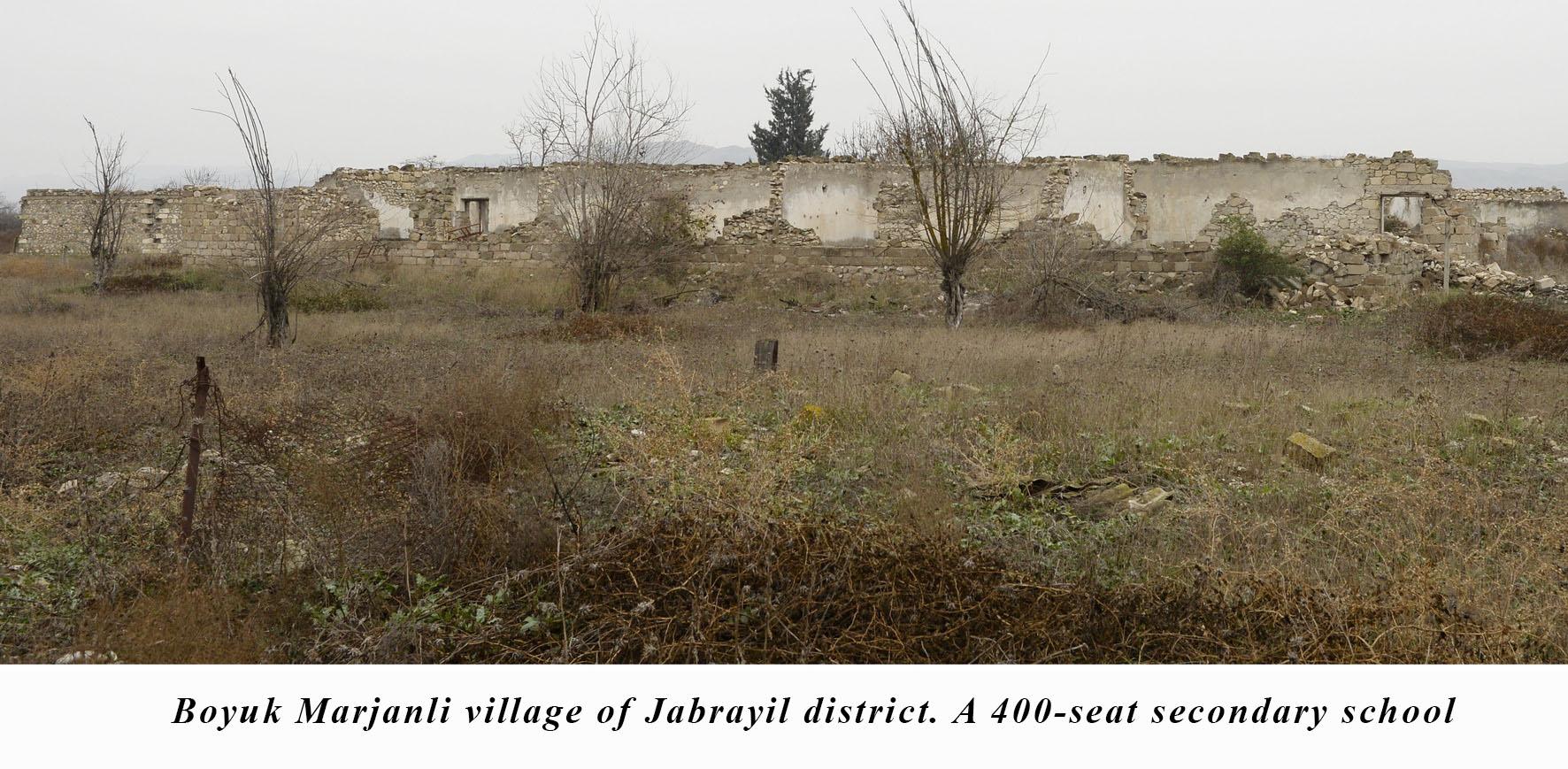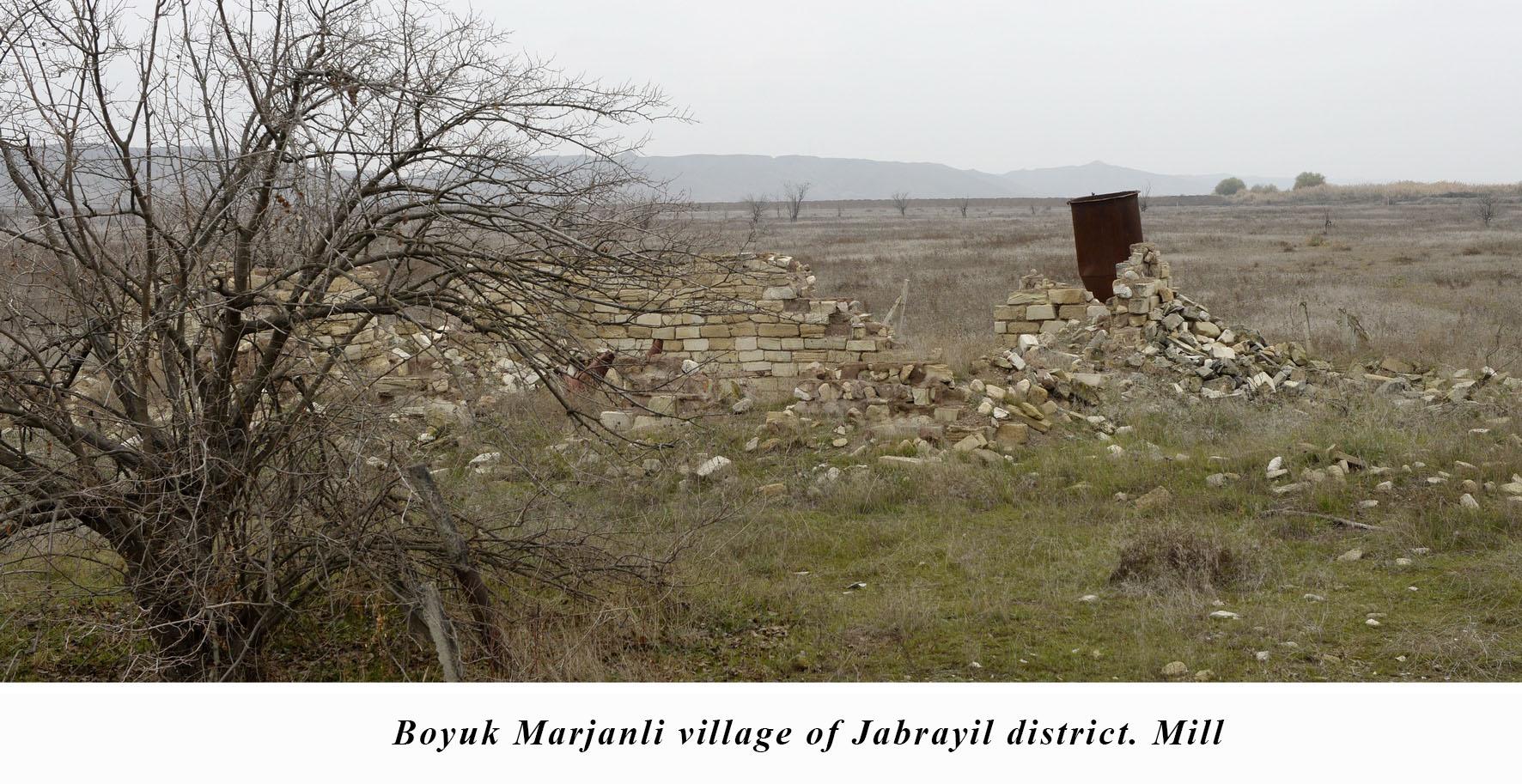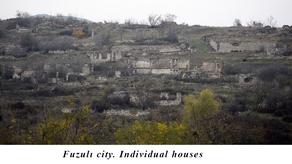
Azerbaijan State News Agency AZERTAC film crew visited destroyed places during Armenian occupation and photographed Fuzuli city, Minjivan settlement of Zangilan district, and Boyuk Marjanli village of Jabrayil district.
Karabakh was liberated from occupation, and an end was put to people's longing for the homeland. After 30 years of occupation of Jabrayil, Gubadli, Zangilan, Fuzuli, Agdam, Kalbajar, Lachin districts, Shusha, and Hadrut, as well as hundreds of villages and settlements, the flag of Azerbaijan flies there again.
"The whole world saw savagery people faced. There have been many wars in the history of mankind, but nowhere has there been so much cruelty and hostility. Such atrocities were unseen even during World War II, religious and historical sites were not destroyed. The deplorable situation in Karabakh shows that Armenian fascism is the ugliest and cruel of all fascisms in all countries", - the article states.President Ilham Aliyev described the situation in the liberated lands at a press conference for local and foreign media on 26 February: "You drive hundreds of kilometers and see only destroyed villages, there is not a single sound building left. There is not a single building in Agdam. There is only a partially destroyed mosque, which the Armenians used as a landmark and an observation post to correct fire... There is not a single building in Fuzuli. There was not even a place to hoist a flag... The situation is the same in Jabrayil. There are several houses left in Zangilan and Gubadli, and they were used in illegal settlements.One of the places destroyed by Armenia is the city of Fuzuli. The city of Fuzuli, which borders on Jabrayil, Khojavand, Aghjabadi, Beylagan districts, and Iran along the Araz River, was occupied by Armenian armed forces in 1993. The Azerbaijani Army liberated the city of Fuzuli on 17 October 202Speaking about the sights he saw along the way during his visit to Fuzuli on 16 November last year, President Ilham Aliyev said: "We have returned to Fuzuli. But it hurts to see the destroyed villages and the city of Fuzuli along the road. Look what the savages did to our city! They have destroyed everything; they have destroyed houses, destroyed the entire infrastructure, there is not a single safe building. The whole world should see what the Armenian savagery is all about. And we will show it to the whole world. Not only Fuzuli but also Aghdam and other cities. It is as if a savage tribe has swept through these land".
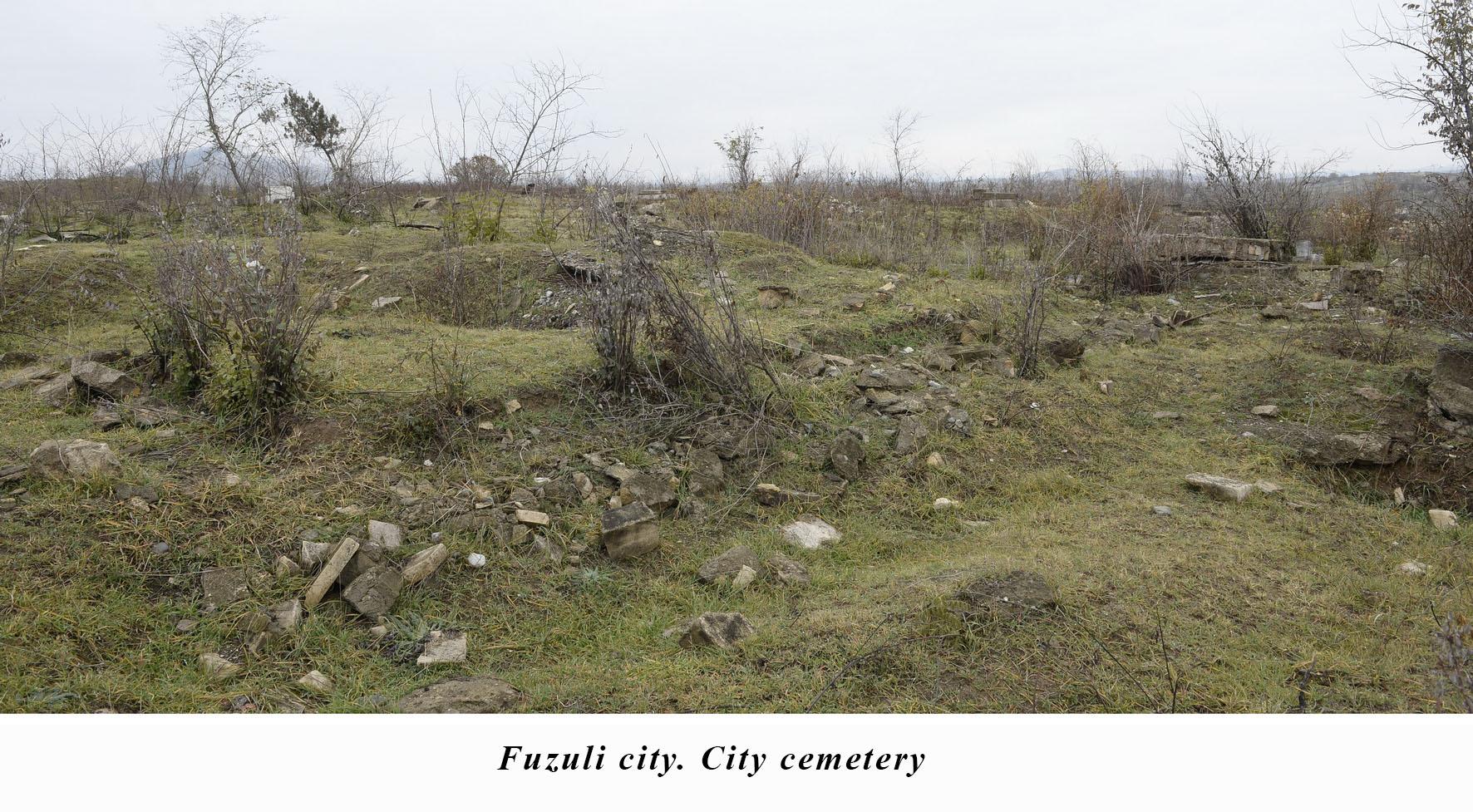
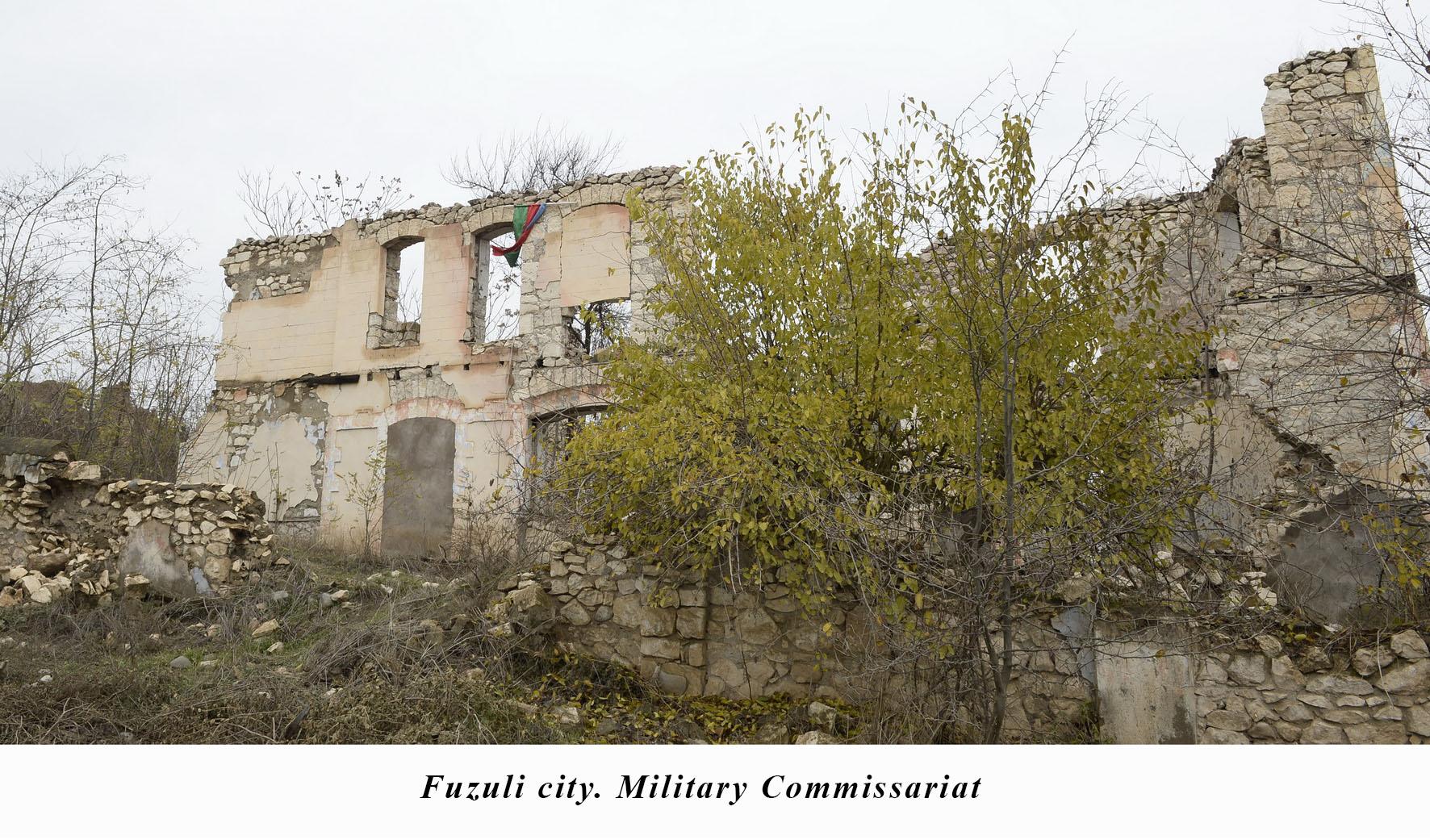
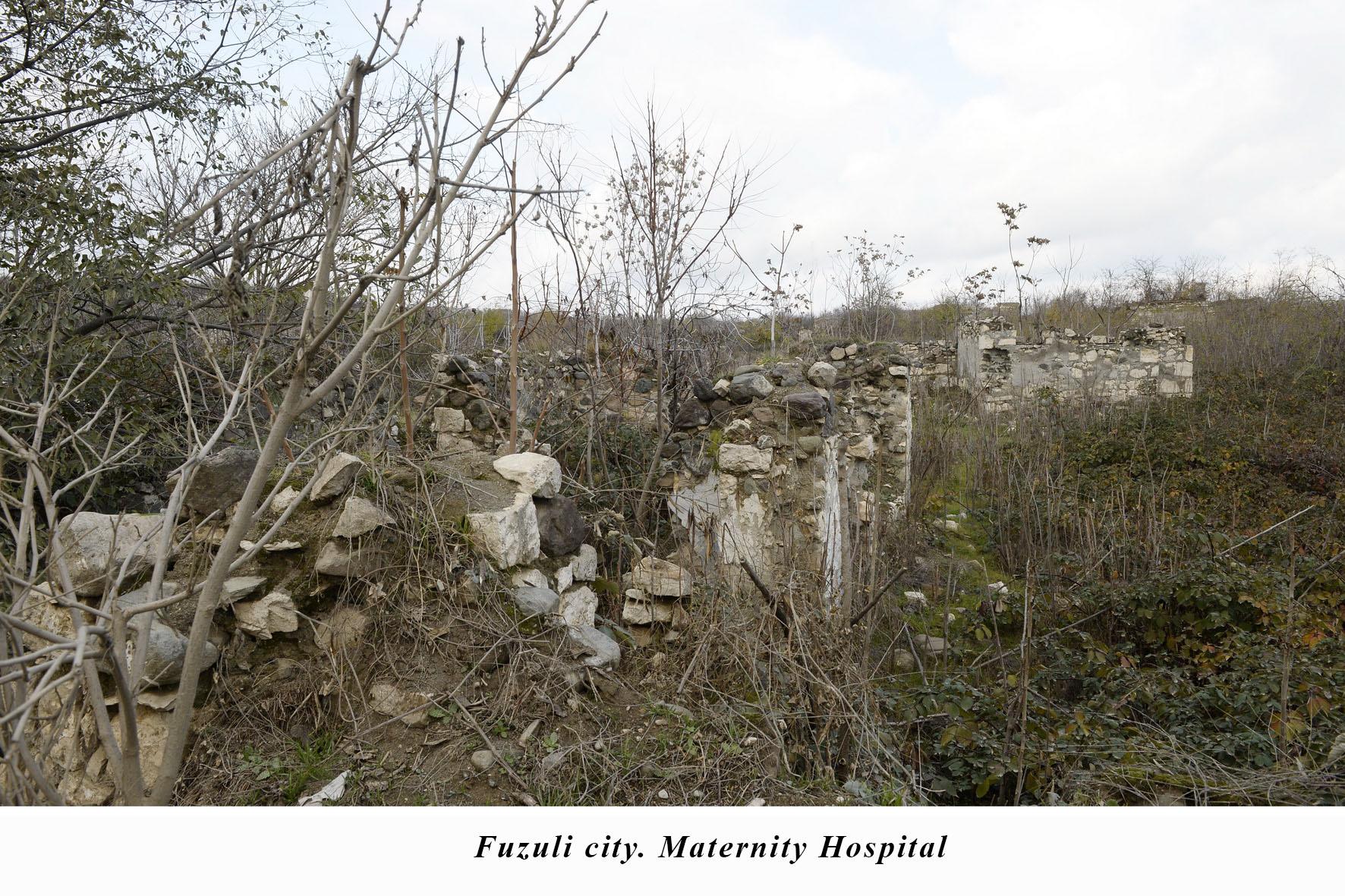
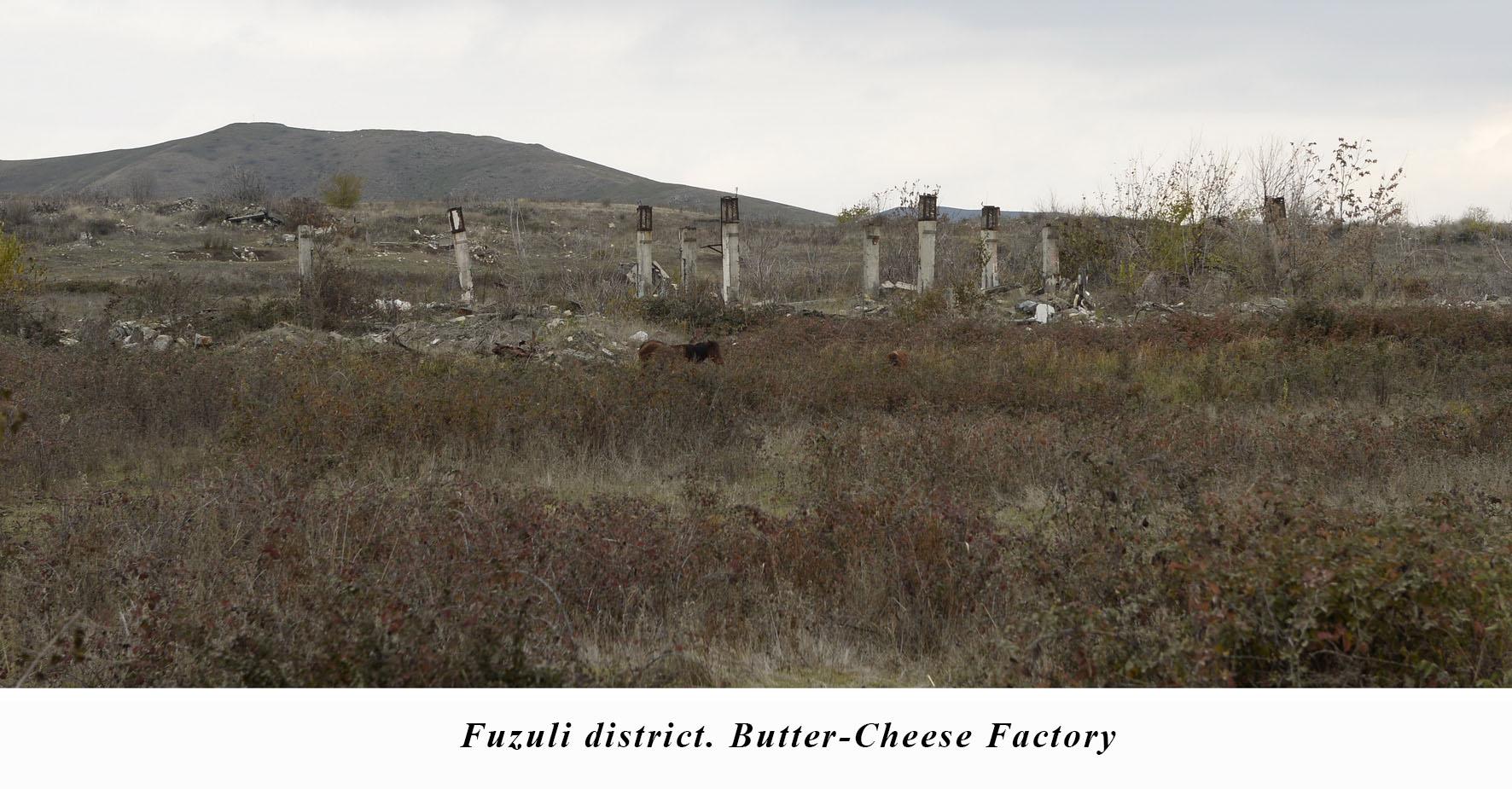
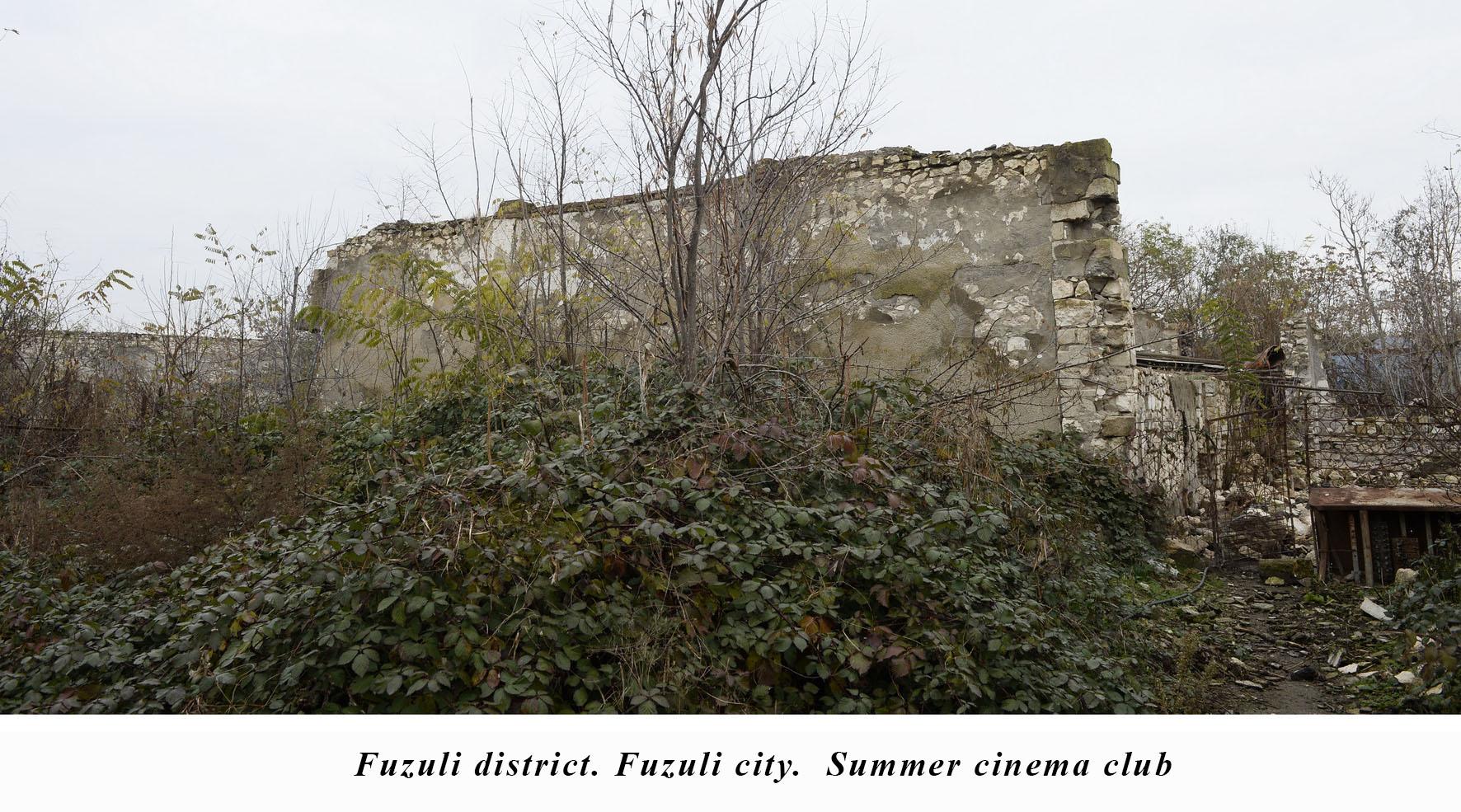
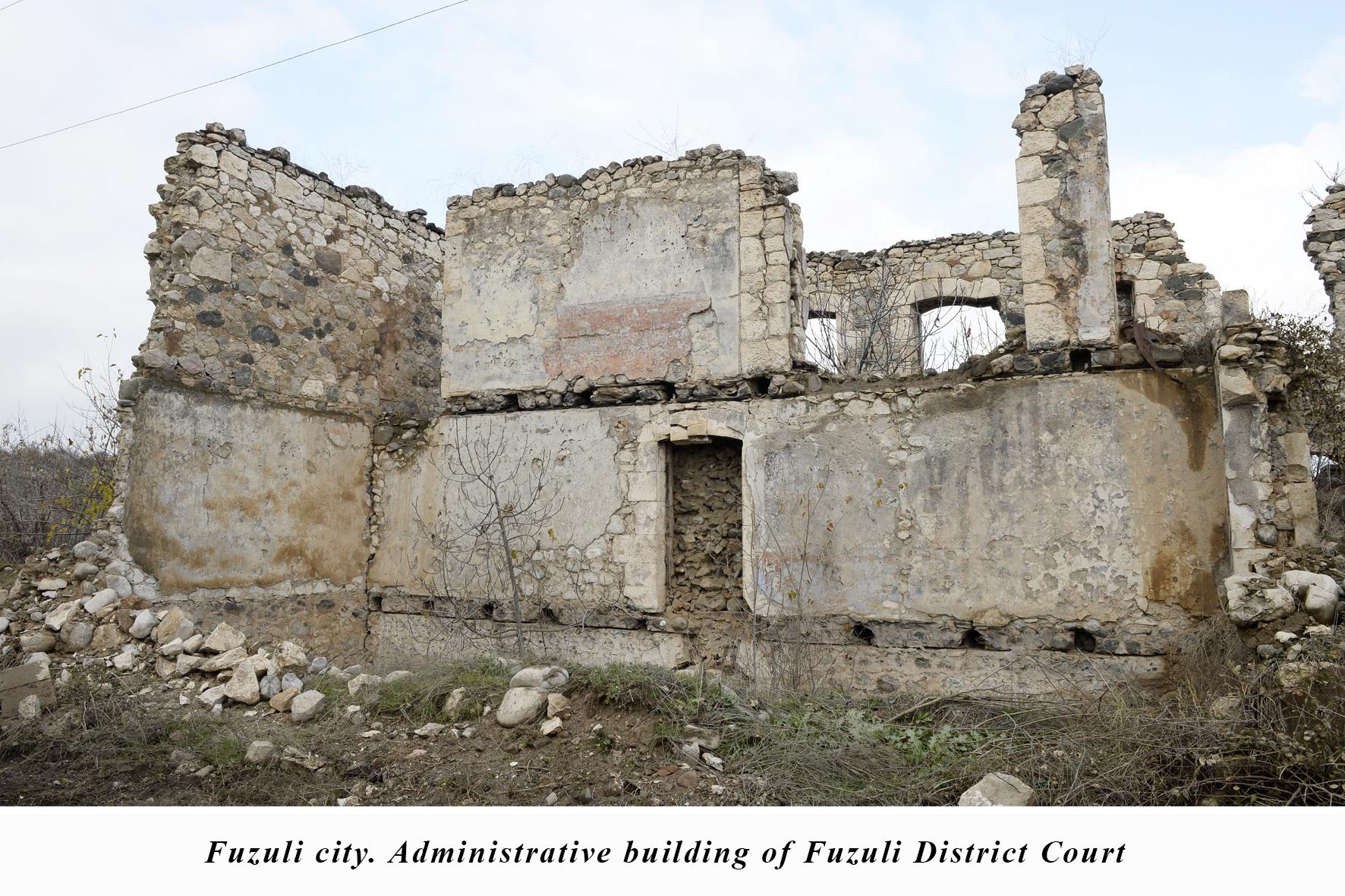
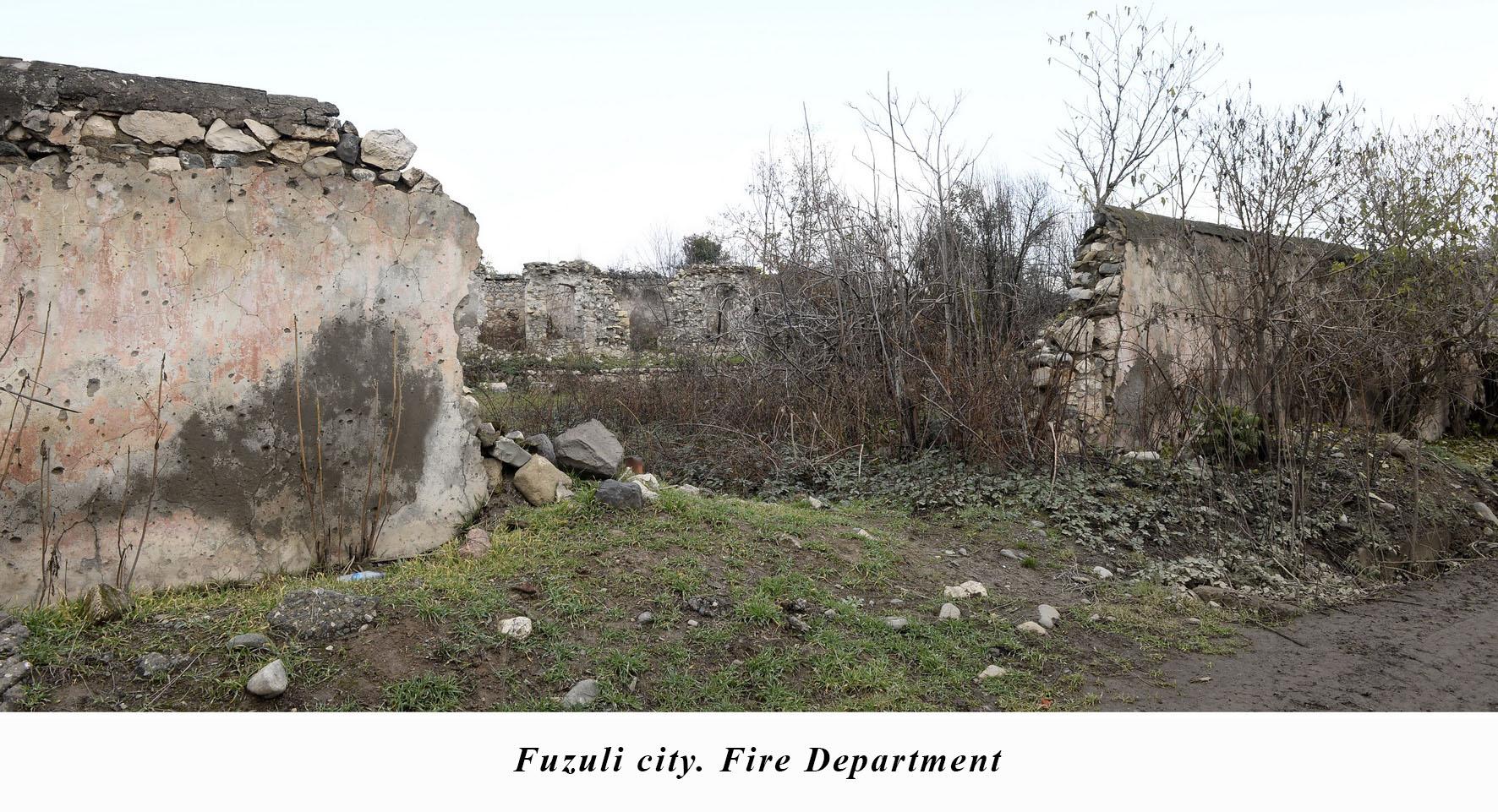
It is also clear from the photos that the enemy did not leave a single building in Fuzuli. All historical, cultural and architectural sites, caves and mounds, tombstones have been barbarically destroyed or looted.
Historical memory: Before the occupation, the city of Fuzuli had a population of 18,965 people. In other words, it was home to 4,741 families. There were 3,487 courtyard houses, 62 residential buildings, five hospitals, three underground water pipes, seven historical sites, 19 schools and 10 kindergartens in the city. There were also a culture house, two clubs, four libraries, five music schools, a history and ethnography museum, a technical vocational school, a taxi terminal, a cocoon reception station, an ancient bath, an outdoor cinema, a statue of Fuzuli, a building of the “Araz” newspaper, the 17th century Haji Alakbar mosque, a monument to Aghabala Abdullayev, a culture center, a central market, a textile factory, an eye hospital and other buildings in the city. There are no traces of them now. Residents of Fuzuli may try to find their street, neighborhood or house in these photos. Unfortunately, there is nothing to see but a pile of stones...
What is left of the strategically located Minjivan settlement
The photos depicting the current state of Minjivan settlement, one of the largest settlements in Zangilan, were taken in April this year. Apparently, there is not a single safe building there. However, located in a strategically important position on the main railways and highways, Minjivan was once distinguished by its unique appearance. The Julfa-Horadiz-Sarijalar-Osmanli railway used to pass through the settlement. After the occupation of the district by Armenia, the Minjivan railway station also ceased its operations. Later it was completely destroyed by Armenians.
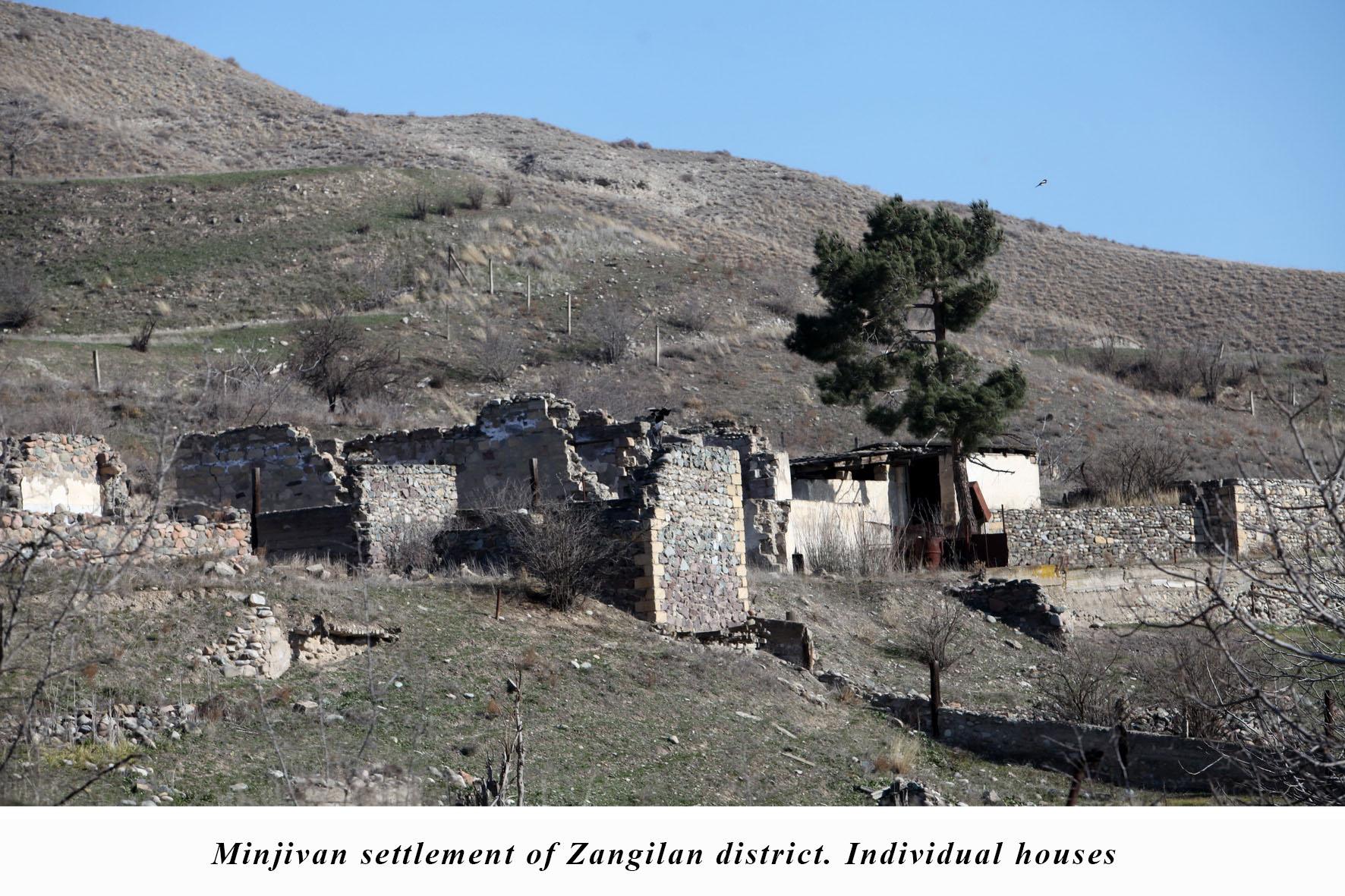
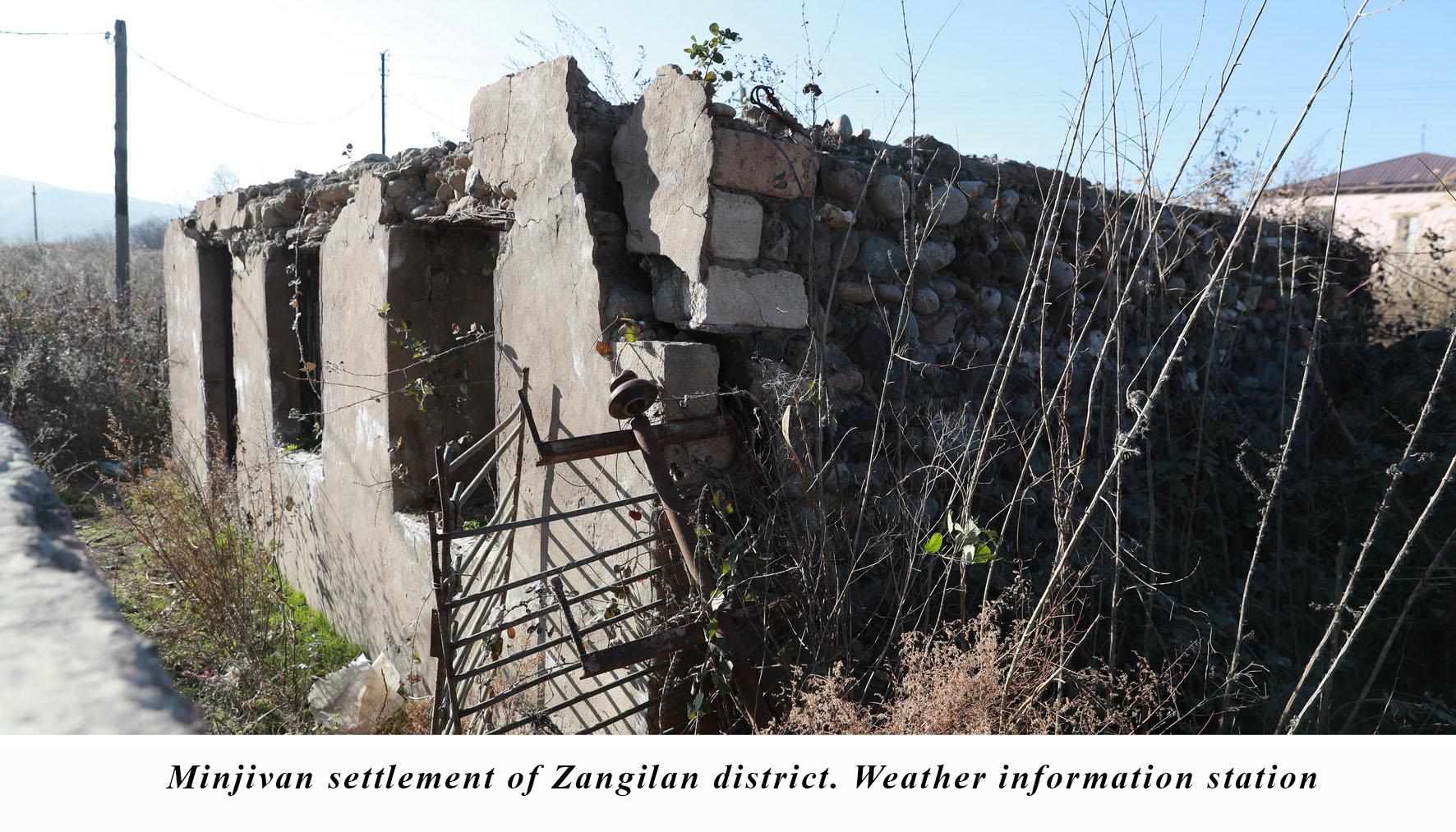
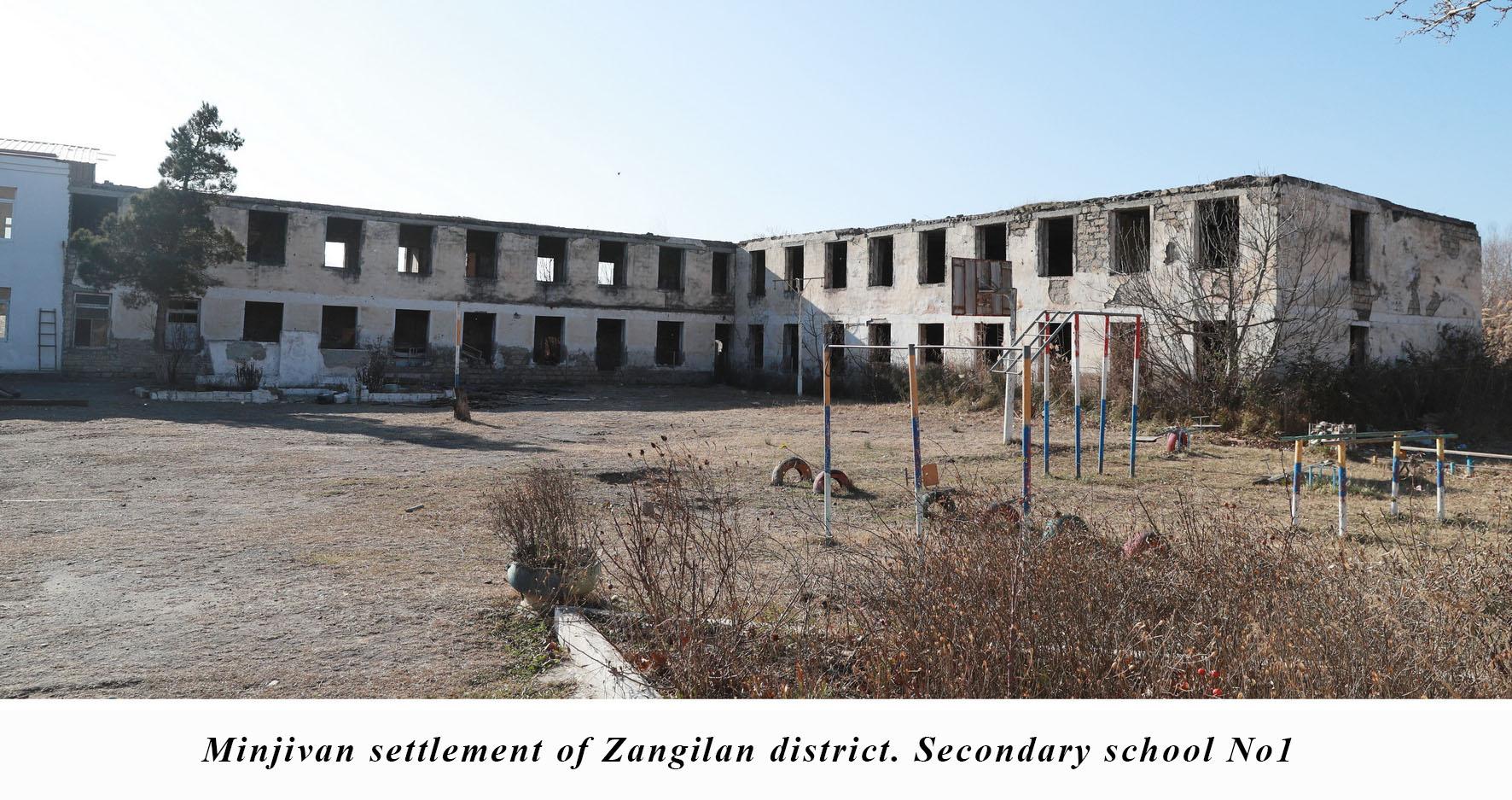
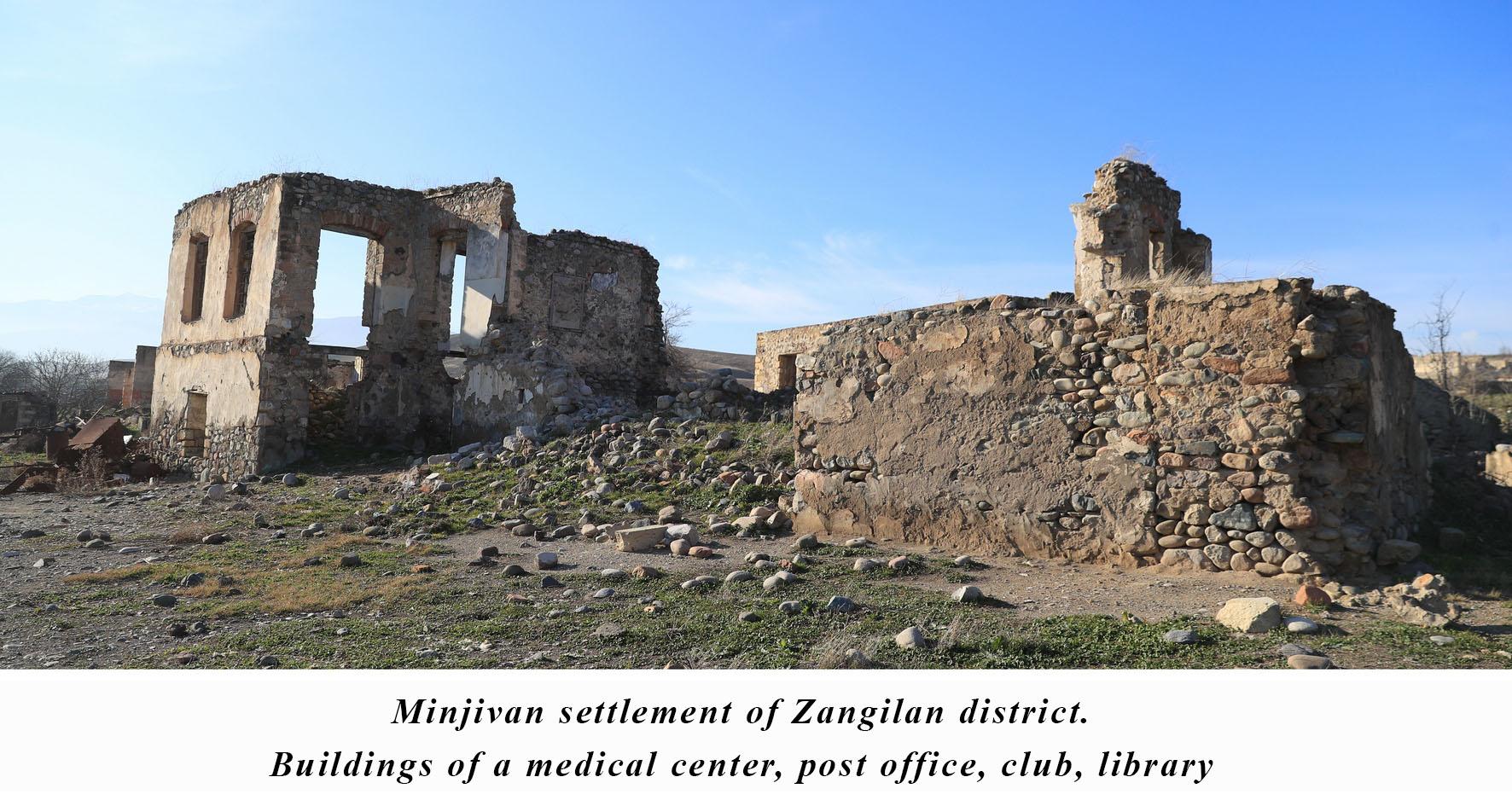
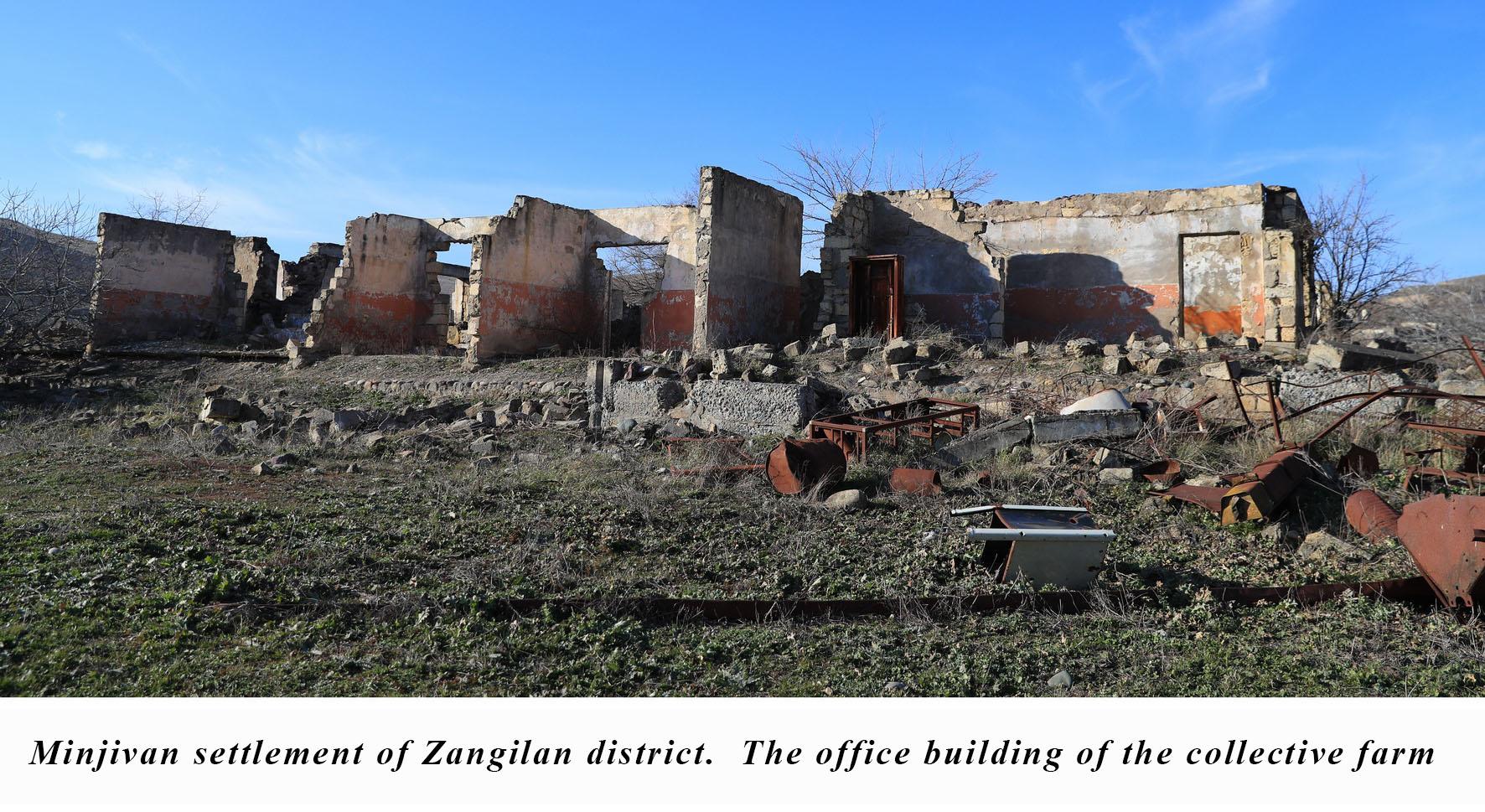
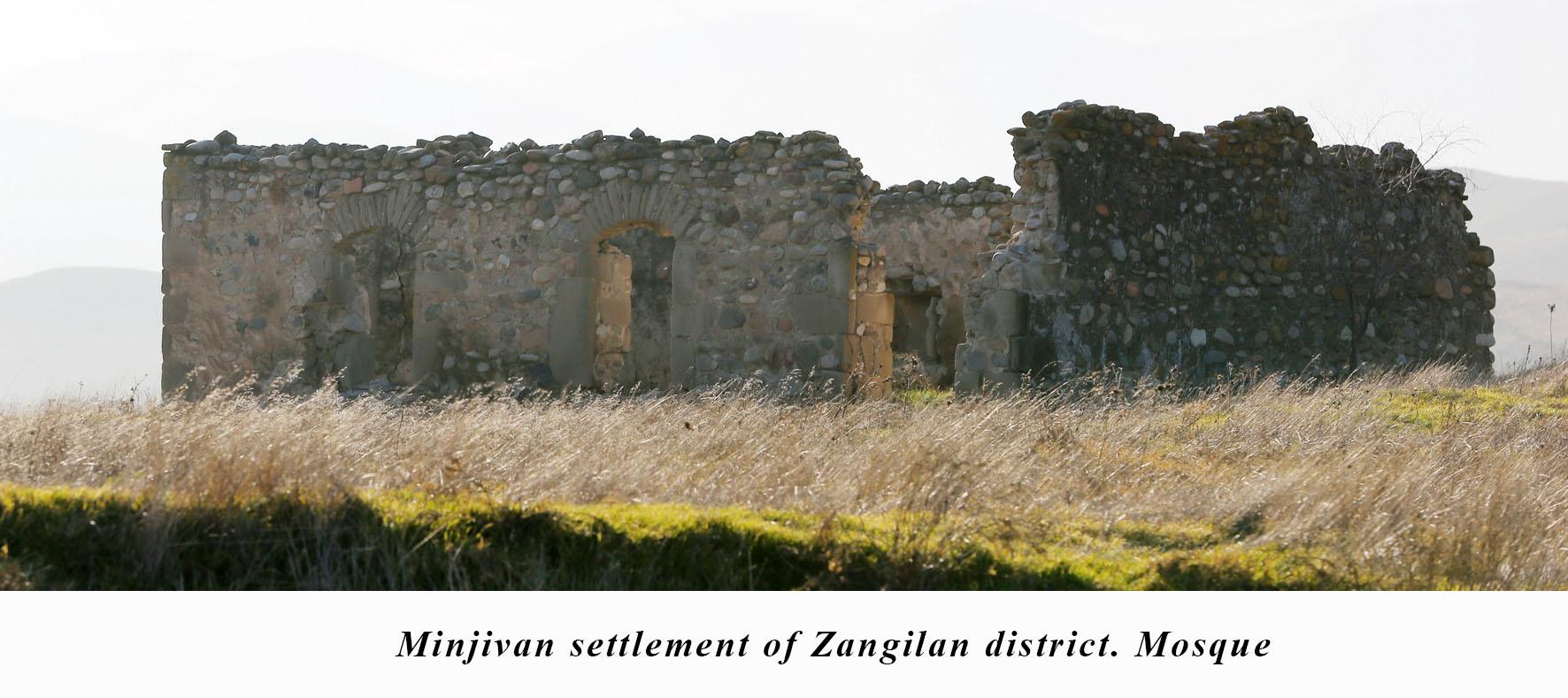
Historical memory: Before the occupation, there were 995 houses and ancillary buildings in Minjivan settlement. More than 4,600 people lived in the settlement, which covers an area of 1,254 hectares. There were 266 hectares of arable land, 14 hectares of hayfields, 15 hectares of mulberry orchards and 105 hectares of vineyards. The settlement was also home to about 20 office buildings, three schools, three kindergartens, four libraries, two culture houses, two post offices, two reservoirs, as well as a music school, a chemical association, a grain warehouse, a hospital, a mosque and other buildings, which have been destroyed or looted by the Armenian army. In addition, a railway hospital, an ancient bathhouse, an indoor and outdoor cinema, a commandant's office of the Minjivan border post of the State Border Service are among the demolished buildings.
"Armenia has also committed environmental terror in Karabakh. The deforestation of a rare sycamore forest in Zangilan is further evidence of this. Covering a large area in the Basitchay river basin, this centuries-old sycamore forest is the second largest in the world and the biggest in Europe. Due to its natural climate, underground resources, fertile lands and mysterious nature, the region is called “Golden Zangilan”. Minjivan, occupied by Armenia in October 1993, was liberated on 21 October 2020", - article states.
Reconstruction work has now begun in the liberated areas. According to the order of President Ilham Aliyev, the first “smart village” project will be implemented in Zangilan. The project will cover three villages – the villages of Aghali 1, 2 and 3. Preparations are underway for the groundbreaking ceremony.
Boyuk Marjanli village with nothing left of it
The photos from the Boyuk Marjanli village also show unparalleled destruction. One of the largest villages of Jabrayil District, Boyuk Marjanli, is located in the southeast of the Lesser Caucasus Mountains, in the Karabakh range.
Historical memory: Before the occupation, there were 863 houses in the village. the village with a population of more than 3,500 people had two schools, a hospital and a medical center, a club, a library, a railway station, a stadium, agricultural facilities, a mill, a household service center, a furniture store and other facilities. Now there is nothing left of any of that now. As can be seen from the photos, the scale of destruction is immeasurable.The village of Boyuk Marjanli, occupied by the Armenian army on 23 August 1993, was liberated 27 years later, on the first day of the Patriotic War – on 27 September 2020.
